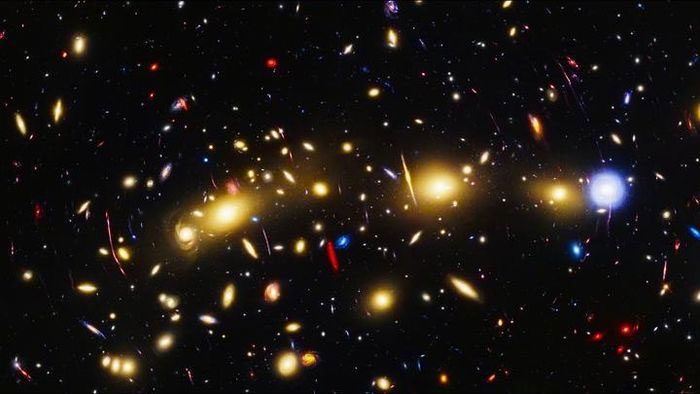NASA Unveils Stunning New Image of the Christmas Tree Galaxy Cluster, Known as MACS0416
NASA has harnessed the power of its two leading space telescopes, the James Webb Space Telescope (JWST) and the Hubble Space Telescope, to create the most comprehensive and colorful view of the enormous galaxy cluster located 4.3 billion light-years from Earth.
By utilizing these two powerful telescopes to explore the massive galaxy cluster scientifically named MACS0416 at different wavelengths, the instruments have discovered a plethora of giant stars in a variety of shapes and colors within the galaxy cluster.

NASA Unveils Stunning New Image of the Christmas Tree Galaxy Cluster, Known as MACS0416. (Image: NASA).
NASA explains that the different colors represent the distances of various smaller galaxies within the main galaxy cluster. In the image, many smaller galaxies appear in blue and red, scattered around bright yellow light trails.
The blue galaxies are situated near the center of the massive MACS0416 galaxy cluster, which is also where the most intense star formation activity is concentrated. In contrast, the red galaxies contain more cosmic dust and are found farther from the center of the main galaxy cluster.
Notably, one object is magnified in the new image: a slender, pink-red giant star nicknamed “Mothra.” According to NASA, this star has been magnified at least 4,000 times for observation.
In MACS0416, the slender, pink-red giant star known as “Mothra” has been magnified at least 4,000 times for observation. (Image: NASA).
Haojing Yan, an astronomy professor at the University of Missouri and the lead author of the report, stated: “We call MACS0416 the Christmas Tree Galaxy Cluster because it is so colorful, containing bright stellar clumps shimmering against the backdrop of the galaxy cluster.”
Additionally, through NASA’s two leading space telescopes, Professor Haojing Yan has identified over a dozen spectral variations caused by supernovae within the galaxy cluster. This provides crucial data for a deeper understanding of the early universe and helps address questions about the expansion and star formation of the universe.


















































